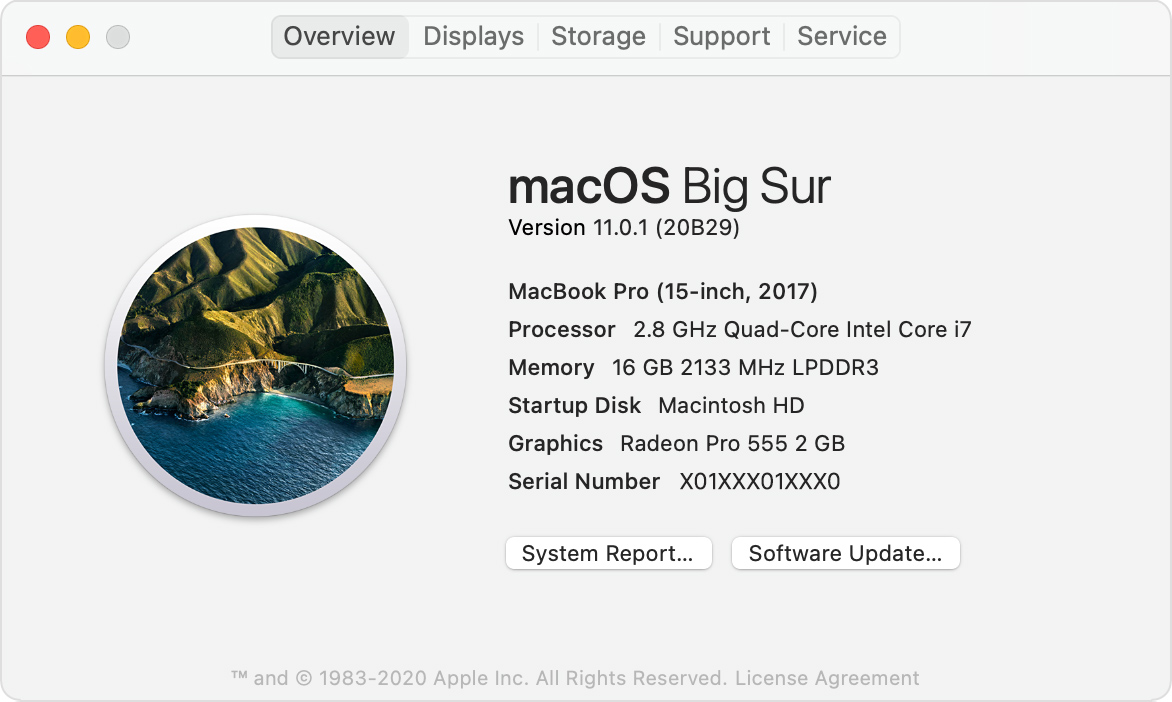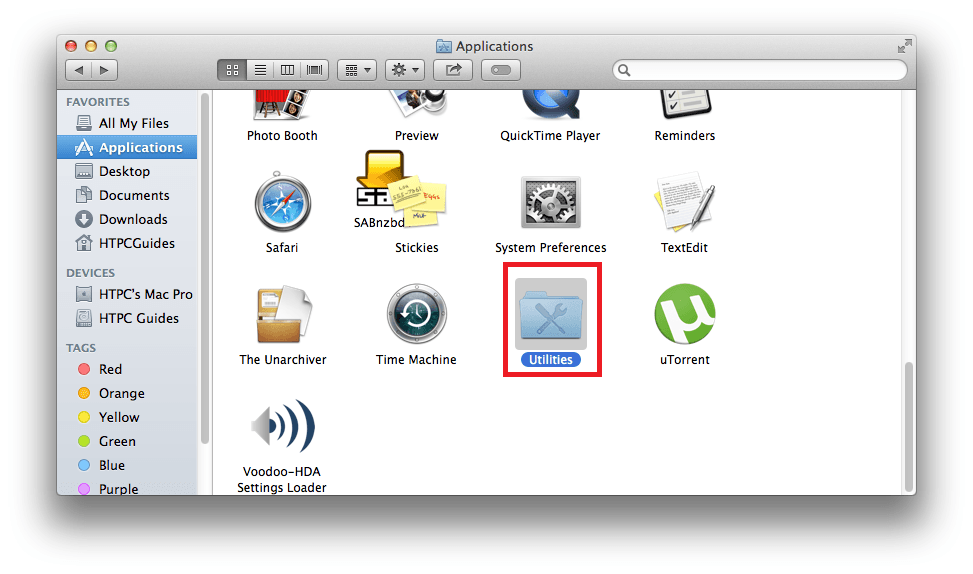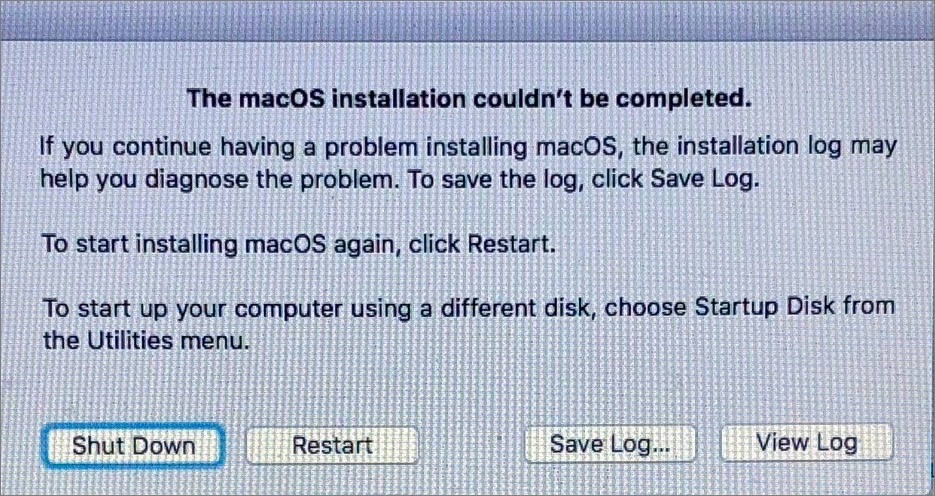Install Latest Osx
If you perform a fresh install of Xcode, you will also need to add the commandline tools by running xcode-select-install on the terminal. While OS X comes with a large number of Unix utilities, those familiar with Linux systems will notice one key component missing: a decent package manager. Download the latest version of the Aircrack-ng suite for Windows to your computer. The link for the zip file can be found on the Wiki home page. Unzip the contents of the Aircrack-ng zip file into “C: ”.
-->Install GitLab Runner on macOS. GitLab Runner can be installed and updated on macOS. There are two methods for installing GitLab Runner on macOS: Manual installation. This method is officially supported and recommended by GitLab. Homebrew installation. Install with Homebrew as an alternative to manual installation. The install target, in addition, assembles the package files with this shared library under build/R-package and runs R CMD INSTALL. On Windows, CMake with Visual Studio has to be used to build an R package with GPU support.
sqlpackage runs on Windows, macOS, and Linux.
Download and install the latest .NET Framework release and macOS and Linux previews:
| Platform | Download | Release date | Version | Build |
|---|---|---|---|---|
| Windows | MSI Installer | March 10, 2021 | 18.7 | 15.0.5084.2 |
| macOS .NET Core | .zip file | March 10, 2021 | 18.7 | 15.0.5084.2 |
| Linux .NET Core | .zip file | March 10, 2021 | 18.7 | 15.0.5084.2 |
| Windows .NET Core | .zip file | March 10, 2021 | 18.7 | 15.0.5084.2 |
For details about the latest release, see the release notes. To download additional languages, see the Available Languages section.
An evergreen link (https://aka.ms/sqlpackage-linux) is available that points to the current version of sqlpackage for Linux .NET Core, which can be used in automating environments with the latest sqlpackage.
DacFx
SqlPackage is a command-line interface for the DacFx framework, exposing some of the public DacFx APIs. DacServices (Microsoft.SqlServer.Dac) is a related mechanism for integrating database deployment into your application pipeline. The DacServices API is available in a package through NuGet, Microsoft.SqlServer.DACFx. The current DacFx version is 150.4897.1.

Installing the NuGet package via the .NET CLI is accomplished with this command:
Note
Additional NuGet packages were published under the DacFx name, 'Microsoft.SqlServer.DacFx.x64' and 'Microsoft.SqlServer.DacFx.x86'. Support for both platforms is covered under the 'Microsoft.SqlServer.DACFx' package. New references should be made to this package, not the x64 or x86 variants.
Get sqlpackage for Windows
This release of sqlpackage includes a standard Windows installer experience, and a .zip:
- Download and run the DacFramework.msi installer for Windows.
- Open a new Command Prompt window, and run sqlpackage.exe
- sqlpackage is installed to the
C:Program FilesMicrosoft SQL Server150DACbinfolder
- sqlpackage is installed to the
Get sqlpackage .NET Core for Windows
Download sqlpackage for Windows.
To extract the file by right clicking on the file in Windows Explorer, and selecting 'Extract All...', and select the target directory.
Open a new Terminal window and cd to the location where sqlpackage was extracted:
Get sqlpackage .NET Core for macOS
Download sqlpackage for macOS.
To extract the file and launch sqlpackage, open a new Terminal window and type the following commands:
Note
Security settings may require modification to run sqlpackage on macOS. Use the following commands to interact with Gatekeeper from the command line.
Before executing sqlpackage:
After executing sqlpackage:
Get sqlpackage .NET Core for Linux
Download sqlpackage for Linux by using one of the installers or the tar.gz archive.
To extract the file and launch sqlpackage, open a new Terminal window and type the following commands:
Note
On Debian, Redhat, and Ubuntu, you may have missing dependencies. Use the following commands to install these dependencies depending on your version of Linux:
Debian:
Redhat:
Ubuntu:
Uninstall sqlpackage
If you installed sqlpackage using the Windows installer, then uninstall the same way you remove any Windows application.
If you installed sqlpackage with a .zip or other archive, then delete the files.
Supported Operating Systems
sqlpackage runs on Windows, macOS, and Linux and is built using .NET Core 3.1. The .NET Core 3.1 OS requirements apply to sqlpackage.
Windows (x64)
- Windows 10 (1607+)
- Windows 8.1
- Windows 7 SP1
- Windows Server Core
- Windows Server 2012 R2
- Windows Server 2016
- Windows Server 2019
macOS
- macOS 10.15 'Catalina'
- macOS 10.14 'Mojave'
- macOS 10.13 'High Sierra'
Linux (x64)
- Red Hat Enterprise Linux 7+
- SUSE Linux Enterprise Server v12 SP2+
- Ubuntu 16.04, 18.04, 20.04
Available Languages
This release of sqlpackage can be installed in the following languages:
sqlpackage Windows:
Chinese (Simplified) | Chinese (Traditional) | English (United States) | French | German | Italian | Japanese | Korean | Portuguese (Brazil) | Russian | Spanish
sqlpackage .NET Core Windows:
Chinese (Simplified) | Chinese (Traditional) | English (United States) | French | German | Italian | Japanese | Korean | Portuguese (Brazil) | Russian | Spanish
sqlpackage .NET Core macOS:
Chinese (Simplified) | Chinese (Traditional) | English (United States) | French | German | Italian | Japanese | Korean | Portuguese (Brazil) | Russian | Spanish

sqlpackage .NET Core Linux:
Chinese (Simplified) | Chinese (Traditional) | English (United States) | French | German | Italian | Japanese | Korean | Portuguese (Brazil) | Russian | Spanish
Next Steps
- Learn more about sqlpackage
- Installing
- macOS troubleshooting
GitLab Runner can be installed and updated on macOS.

Installing

There are two methods for installing GitLab Runner on macOS:
- Manual installation. This method is officially supported and recommended by GitLab.
- Homebrew installation. Install with Homebrew as an alternative to manual installation.
Manual installation (official)
Download the binary for your system:
You can download a binary for every available version as described inBleeding Edge - download any other tagged release.
Give it permissions to execute:
The rest of the commands should execute as the user who will run the runners.
- When you build iOS or macOS applications on macOS, use the shell executor.The build and tests run as the identity of the logged-in user, directly on the build host.It does not run in a container. This is less secure than using container executors. For more information, see thesecurity implications documentationfor additional detail on what to keep in mind in this scenario.
Install GitLab Runner as a service and start it:
GitLab Runner is installed and will be run after a system reboot.
Homebrew installation (alternative)
A Homebrew formula is available to install GitLab.
To install GitLab Runner using Homebrew:
Install GitLab Runner.
Install GitLab Runner as a service and start it.
GitLab Runner is installed and running.
Limitations on macOS
Currently, the only proven way for it to work in macOS is by running the service in user-mode.
Since the service will be running only when the user is logged in, you shouldenable auto-login on your macOS machine.
The service will be launched as a LaunchAgent. By using LaunchAgents,the builds will be able to perform UI interactions, making it possible to run andtest in the iOS simulator.
It’s worth noting that macOS also has LaunchDaemons, services runningcompletely in background. LaunchDaemons are run on system startup, but theydon’t have the same access to UI interactions as LaunchAgents. You can try torun the Runner’s service as a LaunchDaemon, but this mode of operation is notcurrently supported.
You can verify that GitLab Runner created the service configuration file afterexecuting the install command, by checking the~/Library/LaunchAgents/gitlab-runner.plist file.
If Homebrew was used to install git, it may have added a /usr/local/etc/gitconfig filecontaining:
This tells Git to cache user credentials in the keychain, which may not be what you wantand can cause fetches to hang. You can remove the line from the system gitconfigwith:
Alternatively, you can just disable credential.helper for the GitLab user:
You can check the status of the credential.helper with:
Manual update
Stop the service:
Download the binary to replace the GitLab Runner executable:
You can download a binary for every available version as described inBleeding Edge - download any other tagged release.
Give it permissions to execute:
Start the service:
Make sure that you read the FAQ section which describessome of the most common problems with GitLab Runner.
Upgrade the service file
In order to upgrade the LaunchAgent configuration, you need to uninstall andinstall the service:
Using codesign with the GitLab Runner Service
If you installed gitlab-runner on macOS with homebrew and your build callscodesign, you may need to set <key>SessionCreate</key><true/> to haveaccess to the user keychains. In the following example we run the builds as the gitlabuser and want access to the signing certificates installed by that user for codesigning:
macOS troubleshooting

The following relate to troubleshooting on macOS.
'launchctl' failed: exit status 112, Could not find domain for
Install Latest Os X
This message may occur when you try to install GitLab Runner on macOS. Make surethat you manage GitLab Runner service from the GUI Terminal application, notthe SSH connection.
Failed to authorize rights (0x1) with status: -60007.
If GitLab Runner is stuck on the above message when using macOS, there are twocauses to why this happens:
Make sure that your user can perform UI interactions:
The first command enables access to developer tools for your user.The second command allows the user who is member of the developer group todo UI interactions, e.g., run the iOS simulator.
Make sure that your GitLab Runner service doesn’t use
SessionCreate = true.Previously, when running GitLab Runner as a service, we were creatingLaunchAgentswithSessionCreate. At that point (Mavericks), this wasthe only solution to make Code Signing work. That changed recently withOS X El Capitan which introduced a lot of new security features thataltered this behavior.Since GitLab Runner 1.1, when creating aLaunchAgent, we don’t setSessionCreate. However, in order to upgrade, you need to manuallyreinstall theLaunchAgentscript:Then you can verify that
~/Library/LaunchAgents/gitlab-runner.plisthasSessionCreateset tofalse.
fatal: unable to access 'https://path:3000/user/repo.git/': Failed to connect to path port 3000: Operation timed out error in the job
If one of the jobs fails with this error, make sure the runner can connect to your GitLab instance. The connection could be blocked by things like:
- firewalls
- proxies
- permissions
- routing configurations
Help & feedback
Docs
Edit this pageto fix an error or add an improvement in a merge request.Create an issueto suggest an improvement to this page.
Show and post commentsto review and give feedback about this page.
Product
Create an issueif there's something you don't like about this feature.Propose functionalityby submitting a feature request.
Join First Lookto help shape new features.
Install Latest Osx Version
Feature availability and product trials
View pricingto see all GitLab tiers and features, or to upgrade.Try GitLab for freewith access to all features for 30 days.
Get Help
If you didn't find what you were looking for,search the docs.
If you want help with something specific and could use community support,post on the GitLab forum.
For problems setting up or using this feature (depending on your GitLabsubscription).
Install New Osx On Ssd
Please enable JavaScript to view thecomments powered by Disqus.